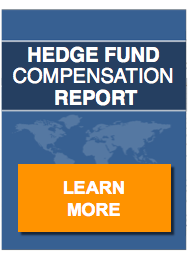Not since Alfred Winslow Jones conceived the hedge fund, have negative sentiments with regard to the industry run so high. There is blood in the water and hedge funds are the wellspring.
It’s True
Many of the industry’s woes are self-inflicted. One could argue that hedge funds are the financial sector’s equivalent to Donald Trump—braggadocios, arrogant, and invincible, unflattering connotations that customarily, attract negative press—just ask the Donald.
Then there are the bad actors. Examples that spring to mind are Doug Whitman, Raj Rajaratnam and Martin Shkreli, all of whom have made immeasurable contributions to the destruction of the industry’s public image.
Lastly, the 2 and 20 hedge fund fee structure has fallen victim to the green-eye of rival investment alternatives, none of which have any qualms about trumpeting the magnitude of hedge fund greed into the welcoming ear of the media.
All of the foregoing have made the hedge fund industry the poster boy for everything that is wrong with Wall Street.
Performance Issues
Hedge funds have performed poorly in recent years, with aggregate gains frequently below those of the S&P 500, however unfair such a comparison may be. In 2016, the industry bled more cash than in any year following the financial crisis, crystallizing the maxim that assets follow performance.
Changing Investor Attitudes
This combination of factors has forced investors to a decision point. Industry legends have churned out back-to-back years of poor performance with the result that it is no longer chic to worship at the feet of celebrity managers. In short, the bloom is off the rose.
Yet…
January 2017’s redemptions of $5.2 billion represent but one-quarter of the $19.3 billion that flowed from hedge funds in January 2016. More to the point, according Credit Suisse’s Hedge Fund Investors Survey, 87 percent of 320 institutional investors representing $1.3 trillion in hedge fund investments intend to maintain and possibly increase their hedge fund exposure in 2017. While this may seem counterintuitive, given the factors outlined earlier, it is equally thorny to imagine well-educated and highly compensated investment managers funneling cash into vanilla investments. As for fees—no one goes looking for an Armani suit at Men’s Warehouse.
Final Thoughts
Thus far, the bullet the industry has fired into its collective foot has not been fatal. Yes, blood has been shed but the wound can heal. However, to maintain the continued confidence the institutional investment community has placed in the hedge fund industry and avoid the sea change many argue the industry richly deserves, roadblocks to performance must be vanquished.
Hedge funds have successfully countered criticism of their fee structures by adopting flexible structures and hurdle rates. Performance remains the key to the industry’s survival. While hedge fund managers undeniably make mistakes, the truly great ones learn from their errors.
Investors have provided the hedge fund industry the opportunity to avoid this crash at the crossroads. Pay attention to the road.



Just saw this article and thought it appropriate.
http://www.businessinsider.com/marathons-andrew-rabinowitz-on-hedge-funds-needing-better-pr-2017-3
Definitely, in need of a PR revamp.
Also – thoughts on having a social cause attached to a fund? Meaning say a certain mission – or a certain % net going to a cause?
The solution is simple: besides imposing hurdle rate and such on management fee. Non-performers should bow out the voluntarily. Hedge Fund industry is a one man or few men shows. Thousands of them are just extras, bees to honey. The institutional investors don’t recognize the fact only make this weed out process even longer.